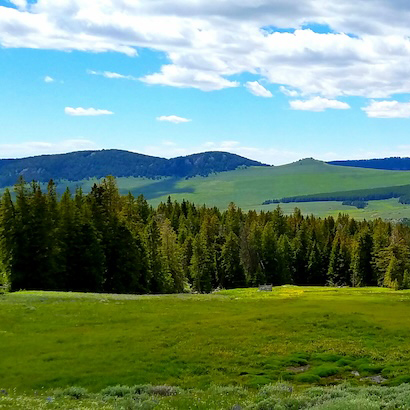Research
Current Research Areas
-

Dryland Restoration and Rangeland Ecology
Our overarching goal in this research area is to identify mechanisms for aiding in grassland recruitment using novel restoration strategies as well as understanding and enhancing plant-soil feedbacks. Through a variety of field and greenhouse-based projects with collaborators across disciplines, these efforts are geared toward creating best rangeland restoration management practices as well as augmenting basic ecology through understanding how land use and chronic aridity can alter ecological states.
-

Dryland Soil Seed Banks
Soil seed banks, or the storage of propagules belowground, are an important component of the natural landscape as they are the history and possible future of the aboveground plant community. Through understanding soil seed banks we can begin to uncover the available site potential of species that are viable and immediately ready to recolonize the aboveground. They also help us better understand biodiversity, resistance and resilience to degradation, and direct future management actions. For this work we take a variety of approaches to examine soil seed bank spatiotemporal dynamics to use this knowledge towards enhancing effective restoration actions.
-

Native Seed Based Restoration
Seed based restoration efforts are one of the most common practices when attempting revegetation and restoration of degraded lands. However, in arid and semi-arid climates active seeding often has low efficacy because of ill-timed moisture patterns, incompatible microsites for germination and establishment, or propagules not fully adapted to these highly variable systems. For this research we test novel and creative seed restoration mixes, seed application patterns, and habitat modification efforts using native species. The goal of these efforts is to better understand dryland plant and plant-soil ecological interactions as well as have direct implications for land managers tasked with enhancing, or returning, more desirable vegetation through active restoration efforts.
-

Invasive Species Treatments
Invasive annual plant species are a pervasive challenge to ecological restoration and rangeland management. Rangelands, globally, support wide array ecosystem services ranging from food security for millions of people to crucial biodiversity habitat to carbon sequestration. Widespread biological invasions by exotic annual plants, like Bromus tectorum (cheatgrass) have severely altered and degraded the biodiversity and ecosystem functioning of these rangeland systems at tremendous economic costs.
Primary methods of invasive species management, in North American rangeland, include targeted grazing, herbicide application, revegetation but it’s difficult to apply over broad areas and no long-term combination of these methods has been achieved. Our current research in this area aims to understand mechanisms that drive invasion of B. tectorum and how biotic and abiotic processes may contribute to the continued invasion and how they may contribute to sustainable control.
Recent Projects
-

Biological Soil Crust Restoration
Biological soil crusts are communities comprised of cyanobacteria, lichen and mosses in the top few millimeters of the soil surface and provide ecosystem services such as moisture retention, nutrient enhancement, and soil stabilization. Highly susceptible to compressional disturbances, biocrust degradation is a major concern worldwide. Because of the ecological importance of biocrust as well as increasing levels of degradation across dryland systems, there is a strong need for understanding and implementing best biocrust restoration practices.
Utilizing cultivated biocrust inocula in association with active soil stability efforts we seek to identify how to overcome constraints to successful biocrust restoration. In addition to focusing on returning soil stability and ecosystem functioning through biocrust restoration, we also examine how soil moisture augmentation methods can help increase native seed germination and recruitment in dryland systems.
-

Fuel Reduction Treatments
For this portion of our work, we examined the ecological effects of various fuel reduction treatments on distinct conifer forest types in both aboveground vegetation and belowground seed banks. We also examined efficacy of native seeding coupled with fuel treatments in Pinyon-Juniper woodlands. By understanding the abiotic and biotic responses of different fuel reduction treatments and their impact on understory native seeding we can continue to refine best management methods.
While there are no active projects in this research area, we are always interested in developing new ideas to best understand how fuel reduction treatments may influence herbaceous plant communities!
-

Vernal Pools
Vernal pools are rain-fed ephemeral pools commonly found in Mediterranean climates and are a highly dynamic system excellent for asking basic and applied ecological questions. Due to recent invasion, they are also a great system understanding invasion dynamics and native plant relationships from the aboveground vegetation dynamics to belowground seed bank spatial and temporal structuring.
